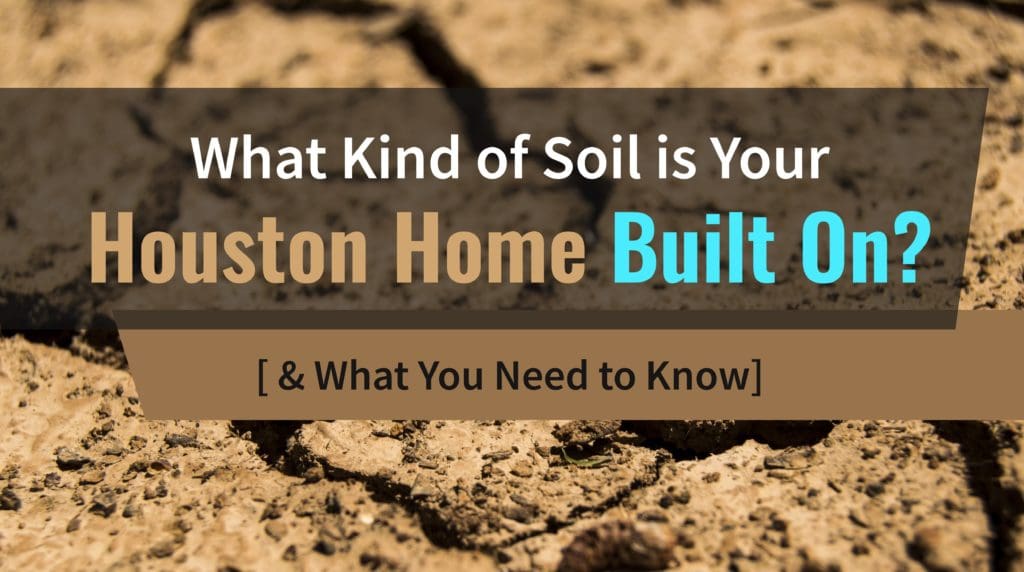Texas is home to dozens of different soil types across its vast stretches. Of course, many of these soil types are grouped based on their qualities. An example is the Houston Black series, which consists of several clay-based soils that are found mostly in the Greater Houston area. Although these soils share some similarities, their texture, structure, porosity, density, and aggregate stability can vary considerably. Therefore, Houston homeowners need to know exactly what type of soil their homes are built on so that they can learn the proper way to protect their home’s foundation against any shifting and settling that could occur over time. Here’s a quick overview of what you need to know to identify the soil under your house.
Having a Soil Test Done for Your Houston Foundation
The easiest way to find out more about the soil around your Houston home is to have a soil test done. In this case, soil testing consists of 5 different types of tests, including:
- A moisture content test, which shows the amount of moisture, indirectly indicates the materials and methods required to achieve full soil stabilization and compaction before any construction or foundation repair work begins.
- An Atterberg limits test, which is also known as the shrinkage limit test. This test plays a critical role in ensuring the soil won’t undergo excessive moisture-related changes in volume during and after construction or foundation repair.
- A gravity test, which is important in establishing the void ratio and degree of saturation of the soil.
- A compaction test, which indicates the degree of compaction the soil requires as well as the most appropriate compaction method (dynamic or static).
- A density test, which allows specialists to determine if the soil requires an increase in strength, compressibility, and/or permeability.
Testing the Soil Yourself
If you can’t have a professional soil test done, there are a few simple ways to test the soil on your own. While DIY soil tests won’t give you the same information as professional tests, you can still learn a lot about the type of soil you have underneath your foundation by simply observing its color, makeup, and drainage properties. To start, gather a handful of soil from near your foundation. Make sure it isn’t too wet. Squeeze the soil tightly in your hand, then release your hand and see what happens. If the soil forms a tight ball and keeps its shape, it has a high clay content. If it forms a loose ball but crumbles when you touch it, you have loam. And finally, if the soil immediately loses its shape, you have sandy soil.
Just conducting this simple squeeze test will tell you a lot about the characteristics of your soil. For instance, silty soil is perfect for growing vegetation due to its high level of organic matter and ability to hold water. Unfortunately, this type of soil isn’t great for foundations for exactly the same reasons. Silty soil holds moisture and promotes plant growth and will eventually cause your foundation to crack due to roots finding their way inside or due to the added pressure that may be applied whenever there is precipitation and the soil soaks it up.
At the other end of the spectrum is loam. Because this soil type contains equal amounts of sand, silt, and clay, it absorbs water and dries out at a relatively steady rate. As this translates into a very low expansion-contraction rate, loam is one of the best types of soil for supporting a foundation.
If your soil is predominantly made of clay, that could be good news, but you still need to pay attention. Some types of clay pack neatly and resist water. Those soils are ideal for building a foundation because there is a low risk of expansion, contraction, and erosion. Unlike loam, clay soil won’t encourage roots to grow near your structure. The most stable type of clay soil is Ultisol, which can be found in Eastern Texas. This soil is highly compacted and has a small expansion-contraction rate in relation to moisture and temperature fluctuations.
However, some forms of clay soil, such as Vertisol or Houston Black, are more expansive, which means that they tend to swell significantly as they absorb water. For the most part, you can still build a home on this type of soil, but you must be aware that your foundation may shift and settle seasonally, especially if it lacks a proper drainage system.
Sandy soil can also be a good option for building a house. That’s because sand can be compacted tightly and drains well. The quick drainage means that water will move away from your home rapidly, so you won’t have to worry about any foundation problems that standing water typically causes. However, sandy soil is quite rare in the Houston area.
Without knowing what kind of soil you have under your home, you may experience different foundation problems down the road. The good news is that, regardless of whether or not you know the soil type under your foundation, our specialists can easily identify it and recommend the most appropriate foundation maintenance practices, drainage systems, soil stabilization methods, and foundation repair solutions, if required. The only thing you need to do is schedule a free, no-obligation foundation inspection and estimate with Allied Foundation today!

